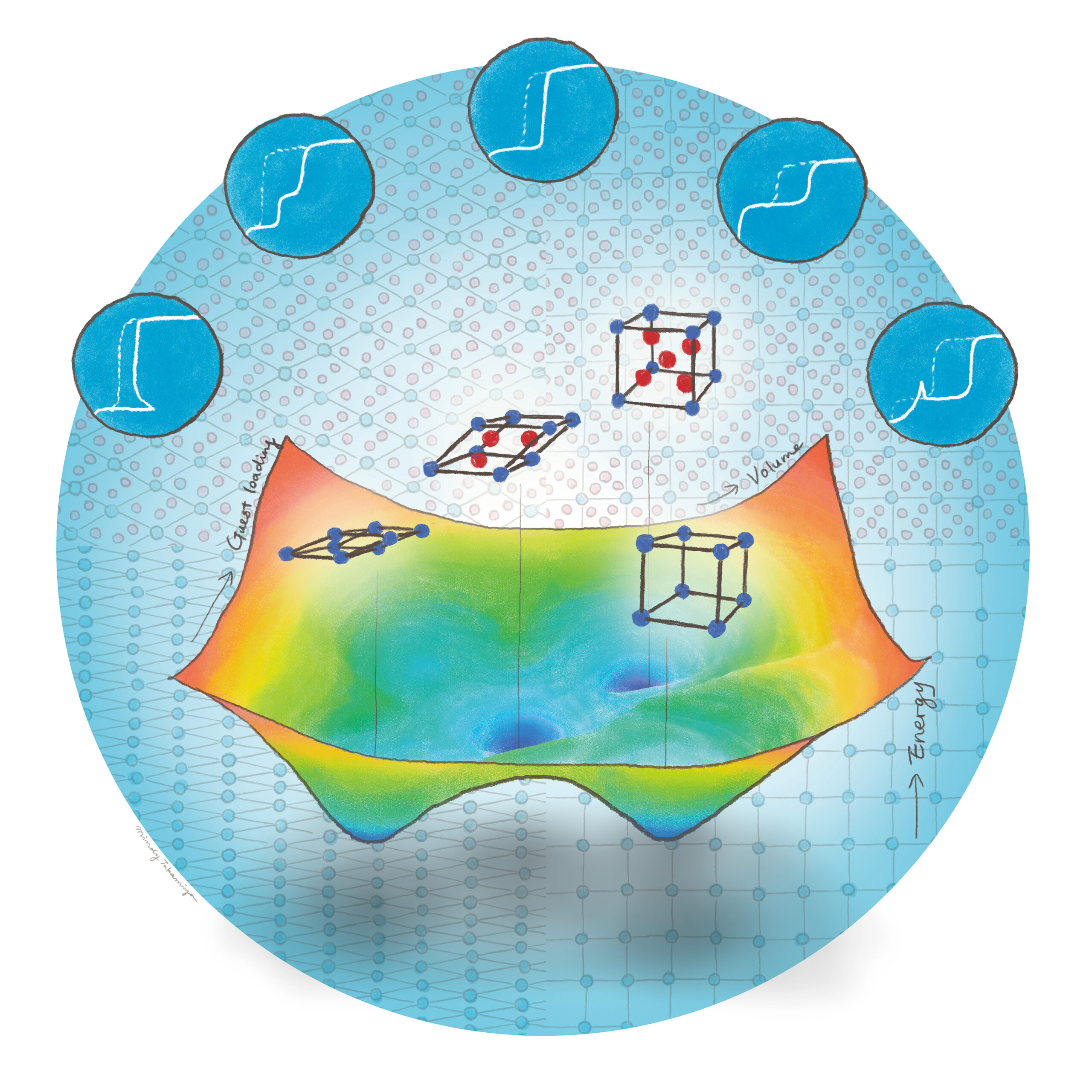Porous Functional Framework Materials
Porosity is an intersting property although it describes more or less void. Voids in porous solids can easily be occupied by guest species, creating a rich host-guest chemistry useful for the storage, transport, and separation of mixtures in the gas or liquid state. Conventional industrial adsorbents based on clays, carbons, and silicates are generally perceived as rigid brittle entities. Although an increase in porosity decreases the mechanical stability of a solid, shape-persistent silica aerogels with porosities beyond 95% can be obtained by activation procedures involving supercritical fluids. Zeolites are superior to amorphous porous solids, especially for separation applications, because of their crystalline structure and ordered porosity. However, the rather dense framework of zeolites, despite their predominantly microporous structure, hampers application in areas such as gas storage. This limitation was addressed by introducing porous coordination polymers (PCPs) and metal–organic frameworks (MOFs). The development of theat feild is nicely summarized in „The chemsitry and application of metal-organic frameworks“
In these porous crystals, metal ions or clusters are linked by multifunctional organic ligands via coordination chemistry to produce coordination networks with voids or channels. Due to abundant inorganic and organic building blocks, materials with defined porous structures are almost infinitely accessible, with functionalized surfaces and unprecedented surface areas can be established.
Many scientists in different fields are now using MOF chemistry (also termed reticular chemistry) to obtain new functionality in crystalline solids. However, reticular chemsitry provdes more possibilities than just assemblying molecules in an order solid. The selection of various network topologies allows to design features such as anisotropy and local symmetry that are otherwise unachievable in molecular solids.
Soft Porous Crystals
Soft porous crystals (SPCs) can undergo structural transitions that strongly impact the physical properties and pore structure of the crystal. The transitions are cooperatively translated throughout the whole crystal lattice of an individual crystal. Flexible Metal-organic frameworks are currently considered the prototypical SPCs but structural transitions in other kinds of porous solids such as zeolithes, covalent organic frameworks, hybrid perovskites and other framework materials are recently reported.
Although an increasing amount of SPCs are reported, they are often discovered by serendipity. So far a coordinated rational approach towards the intended design of SPCs is missing. We explore common features that define the softness and explore in what way the selection of the building blocks influences the resulting structural transitions.
S. Krause, V. Bon, U. Stoeck, I. Senkovska, D. M. Tobbens, D. Wallacher, S. Kaskel, A Stimuli-Responsive Zirconium Metal-Organic Framework Based on Supermolecular Design. Angew. Chem. Int. Ed. 2017, 56 (36), 10676–10680.
S. Krause, J. D. Evans, V. Bon, I. Senkovska, P. Iacomi, F. Kolbe, S. Ehrling, E. Troschke, J. Getzschmann, D. M. Többens, A. Franz, D. Wallacher, P. G. Yot, G. Maurin, E. Brunner, P. L. Llewellyn, F.-X. Coudert, S. Kaskel, Towards general network architecture design criteria for negative gas adsorption transitions in ultraporous frameworks. Nat. Commun. 2019,10 (1), 3632.
For a comprehensive overview of the field of Soft Porous Crystals read our recent review: Chemistry of Soft Porous Crystals – Structural Dynamics and Gas Adsorption Properties.

Illustration of the free energy landscape of soft porous crystals.